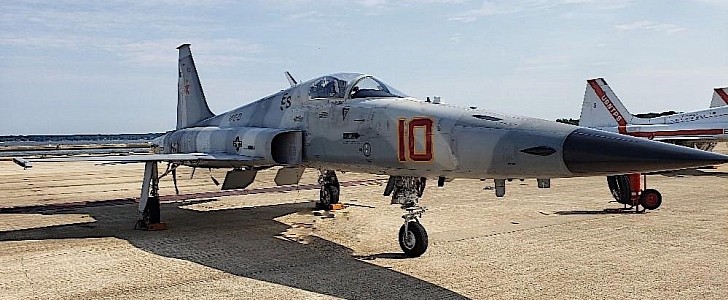Back in the late 1950s, a company by the name of Northrop introduced the F-5, a light supersonic fighter jet that was essentially born to be used as a trainer. It later started being used as an adversary aggressor as well, enlisted in the U.S. Navy and the U.S. Marine Corps, but as with any such aircraft, despite efforts made to keep it up to date, it grew really old really fast.
By the Navy’s own admission, the present-day F-5s are actually the same ones that came off the assembly lines long ago, lacking “modern safety systems, avionics, and common tactical capabilities found in modern aircraft.”
With that in mind, and also because it just acquired no less than 22 of these decrepit F-5s from the Swiss Air Force, the Navy announced the start of a modernization process run through the Specialized and Proven Aircraft program office.
As part of the process, a number of three F-5s, of the F-5N variety (these ones were introduced in 2003) will be gifted with a modernized cockpit, avionics and supporting aircraft architecture, changes meant to “improve safety, capability and reliability, while resolving increasing obsolescence issues.”
The first of three such machines (the one featured in the main photo of this piece) was just delivered this week to Naval Air Station Patuxent River in Maryland, where it will begin ground and flight tests.
It is unclear if these planes, rechristened F-5N+/F+ in the new configuration, will be gifted with improved powerplants.
In standard configuration, the F-5N is powered by a pair of General Electric turbojet engines, each producing 5,000 pounds (2,273 kg) of thrust. The plane can reach a top speed of Mach 1.64, and has a maximum range of 2,314 miles (4,286 kilometers).
Half a decade ago, there were about 500 such aircraft in service with the U.S. military.
With that in mind, and also because it just acquired no less than 22 of these decrepit F-5s from the Swiss Air Force, the Navy announced the start of a modernization process run through the Specialized and Proven Aircraft program office.
As part of the process, a number of three F-5s, of the F-5N variety (these ones were introduced in 2003) will be gifted with a modernized cockpit, avionics and supporting aircraft architecture, changes meant to “improve safety, capability and reliability, while resolving increasing obsolescence issues.”
The first of three such machines (the one featured in the main photo of this piece) was just delivered this week to Naval Air Station Patuxent River in Maryland, where it will begin ground and flight tests.
It is unclear if these planes, rechristened F-5N+/F+ in the new configuration, will be gifted with improved powerplants.
In standard configuration, the F-5N is powered by a pair of General Electric turbojet engines, each producing 5,000 pounds (2,273 kg) of thrust. The plane can reach a top speed of Mach 1.64, and has a maximum range of 2,314 miles (4,286 kilometers).
Half a decade ago, there were about 500 such aircraft in service with the U.S. military.






